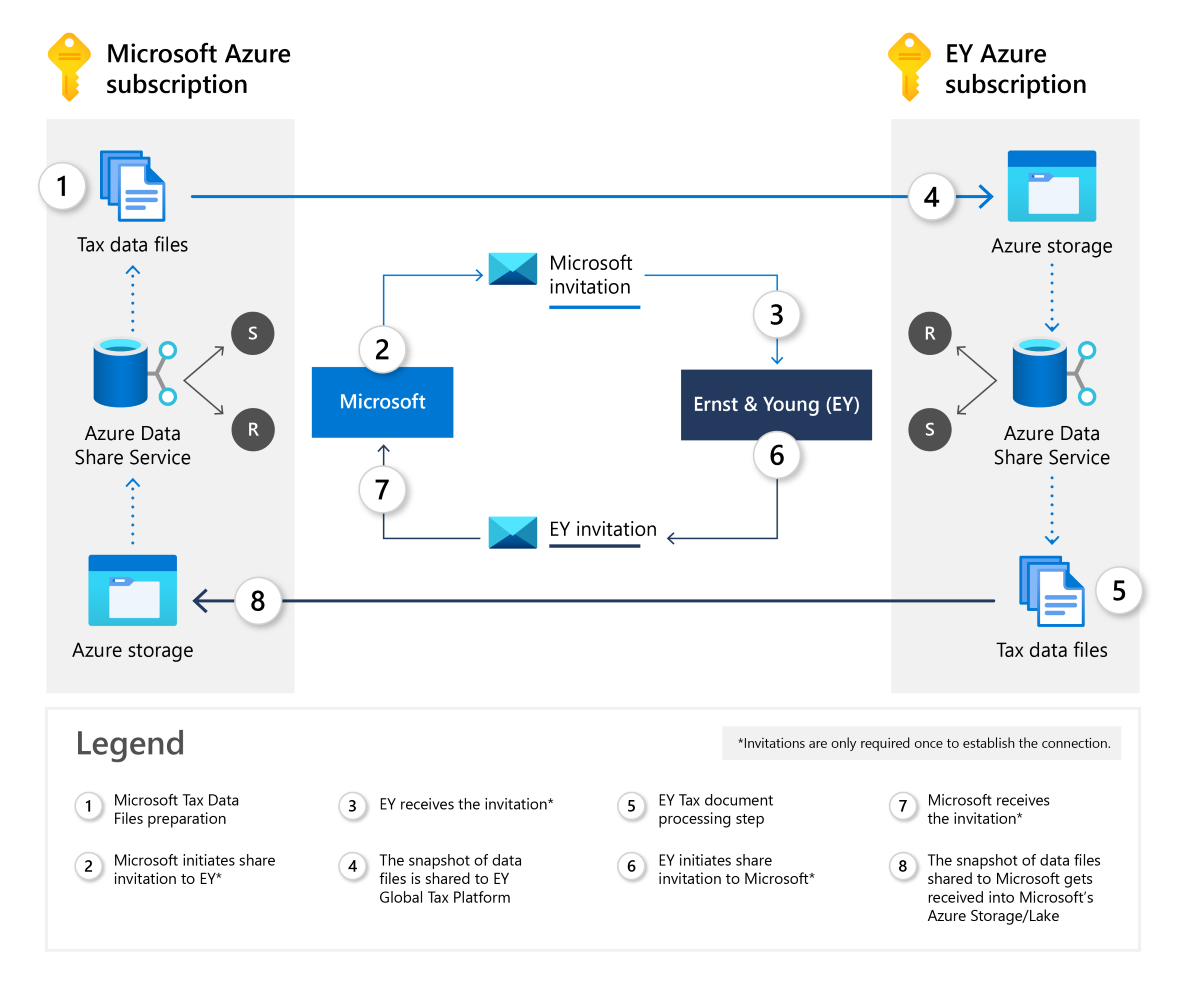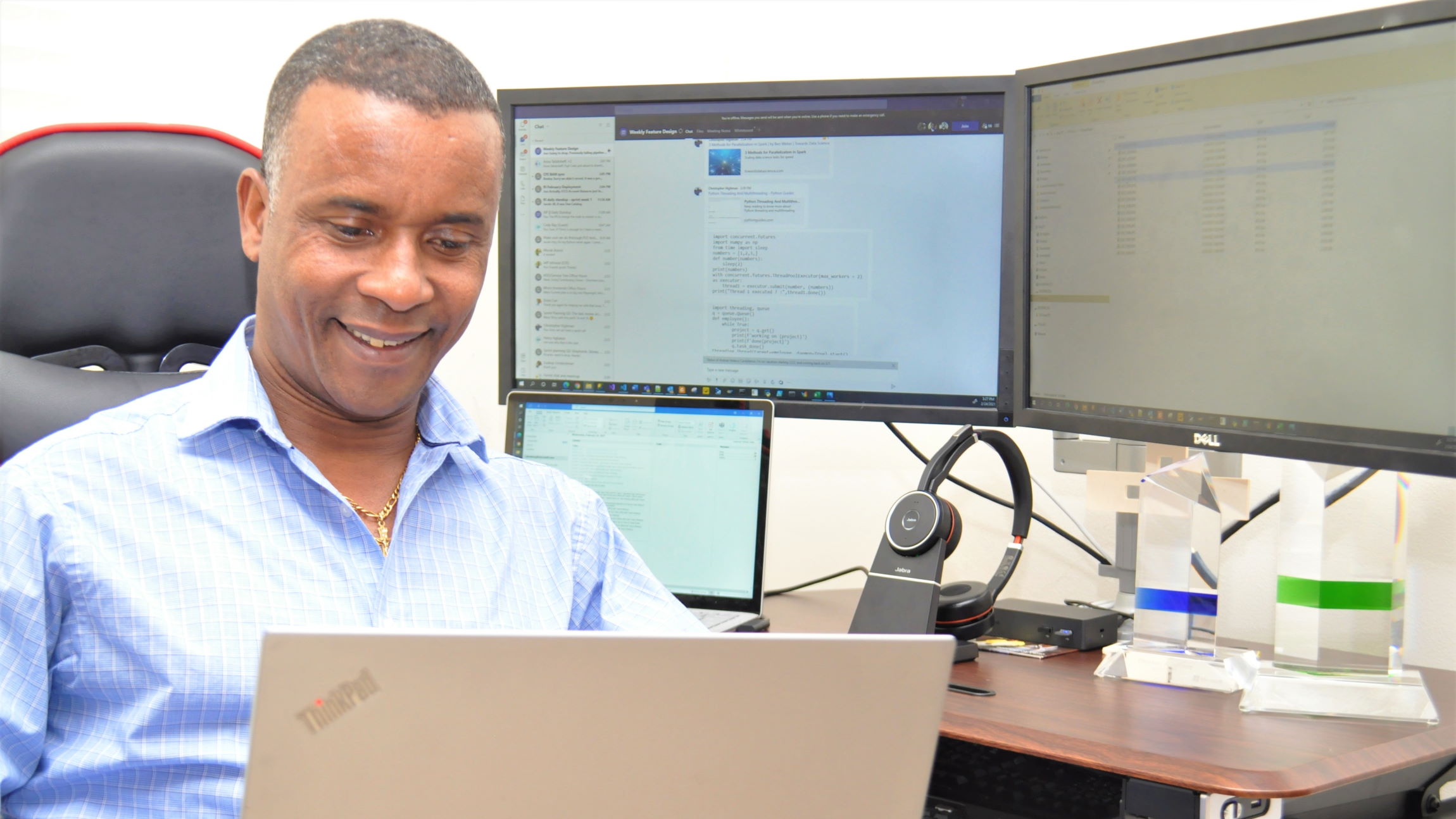This content has been archived, and while it was correct at time of publication, it may no longer be accurate or reflect the current situation at Microsoft.
For a large multinational enterprise such as Microsoft, filing statutory and tax data in a timely and accurate manner poses challenges.
But now Microsoft Digital, the organization that powers, protects, and transforms Microsoft, has partnered with accounting firm, Ernst & Young (EY), to create a streamlined statutory and tax data reporting tool.
Historically, compiling data needed for international statutory accounting and tax filings was a completely manual operation. It took sometimes up to eight weeks after our tax year close to provide all the information required by law.
– Paul Weldon, director of statutory and tax accounting for Microsoft’s financial operations team
Called STAR, for Statutory and Tax Automated Reporting, the new tool replaces a complicated and labor-intensive process that Microsoft had used to collect statutory and tax data for some 200 Microsoft entities worldwide, and automatically sends the data to EY’s Global Tax Platform.
“Historically, compiling data needed for international statutory accounting and tax filings was a completely manual operation,” says Paul Weldon, director of statutory and tax accounting for Microsoft’s financial operations team. “It took sometimes up to eight weeks after our tax year close to provide all the information required by law.”
Any manual process poses risks to a company. Manual processes are more prone to human error, can be time intensive, and costly. These same risks apply to Microsoft, who addressed them primarily through people-oriented solutions. The benefits of mitigating these risks include avoiding late fees and rework of statutory files, plus the receipt of foreign tax credits.
Around mid-2019, Weldon’s team decided to find a more modern approach to statutory and tax data delivery and collection while also reducing risk. They reached out to Microsoft Digital to see if there was a way to utilize the existing Microsoft Azure data lake that was a repository for accounting data. The objective was to map that data to a range of data input and outputs, as well as specific reporting pipelines, to largely automate the collection and dissemination of tax information.
Beyond that, the ability to use Microsoft Azure and its components as data sharing tools was simply something other organizations with data challenges were seeking.
“Many organizations are on a journey to be data-driven, and it depends on what data you have access to,” says Jie Feng, a principal program manager with Microsoft Azure. “In many cases, that data may not be within your organization—you might need to collect it from a partner, a customer, or a vendor in the supply chain. It is critical for organizations to share data with each other in a simple, efficient and secure way.”
[Learn how Microsoft modernized its SAP application by moving it to Microsoft Azure.]
The birth of a new STAR
The thing that made this data transfer solution possible was the ease of integrating multiple Azure resources and components.
– Denekew Jembere, senior software engineer at Microsoft
Microsoft Digital used Microsoft Azure services such as Azure Data Share, Azure Data Lake Storage, Azure Databricks, and Azure Data Explorer to develop a system that collects and identifies the appropriate data from the data lake, organizes it for use by EY, and securely gives them access. Since EY’s Global Tax Platform is built on Microsoft’s Platform as a Service (PaaS) Azure environment, integration has been seamless.
“The thing that made this data transfer solution possible was the ease of integrating multiple Azure resources and components,” says Denekew Jembere, a senior software engineer who worked on the project. “With both Microsoft and EY on Azure, the implementation was straightforward.”
In concept, STAR has three key workstreams:
- A workstream with the data and computing requirements for compliant tax filings.
- A secure method for EY to access Microsoft’s data within its own Global Tax Platform, built on Microsoft Azure cloud, without the need to send sensitive data over the internet.
- Data processing for Microsoft entities, ultimately replacing dozens of outside consultant and third-party software providers now involved in the work.

Big investments pay off
Microsoft’s big investment in Microsoft Azure Data Lake Storage was one key component to the statutory and tax data delivery solution.
It allows people to publish data to a single location, with other teams or people creating tools that access whatever data they need. That eliminated the need to create a custom tool to access data in SAP, which Microsoft uses for accounting.
Jeff Johnson, who led the engineering team within Microsoft Digital, says that the then-recently released Microsoft Azure Data Share was another big reason why creating the new tool was possible.
“That made it possible to securely share data across Azure subscriptions (that is, from one Azure user to another),” he says. “It really simplified things to the point where it took just a few clicks of a button on the EY side for us to transmit the data securely. It took care of all the error-checking and things like that without us having to write a bunch of code.”
Still, it wasn’t easy getting a grip on the vast amounts of complex data required for tax and statutory filings.
“The challenge is the ‘long tail’ in data,” Johnson says. “When you get to millions of records we have here, it’s rare that it follows the patterns you assume it will follow. That’s especially true for a company like Microsoft.”
The team took on the data collection task entity by entity, beginning in September 2019. Following the reporting rhythm of different units, they had covered some 100 entities by July 2020.
To test the new tool, the team first collected data from the previous year, organized it, and sent the data to EY to reconcile it with the work already performed for those years. “We were able to match it up to make sure we were talking about apples to apples,” Johnson says.
Faster, more accurate filings
Microsoft ran its first real-world trial of its new statutory and tax data delivery system in June 2020, at the end of Microsoft’s fiscal year.
“On average, we had draft financial statements sent five or six weeks faster than our standard schedule,” Weldon says. “Some were more than three months faster. So, we’ve already pulled five or six weeks out of the process, even at this early stage. And we can do better.”
Before, I might have had to go to 100 different people in 100 different countries and have them look up some data. Now, we do it all centrally and the output looks the same for every different country. That’s a level where we’re really driving value.
– Ashley Giles, managing director EY
Of course, a key player in our success is EY, who worked closely as a strategic alliance partner with Microsoft during its development of their Global Tax Platform. EY uses its Global Tax Platform on a global scale with other enterprise customers.
Like Microsoft, EY struggled with manual processes, data sent via email, duplicative data requests, and more, says Ashley Giles, Managing Director for the global accounting firm.
“Before, I might have had to go to 100 different people in 100 different countries and have them look up some data,” he says. “Now, we do it all centrally and the output looks the same for every different country. That’s a level where we’re really driving value.”
Now, the goal is to drive the partnership between Microsoft and EY further.
“Both EY and Microsoft are using this as a success story to take to the market,” Giles says.
The story of how the two partners are working better together is resonating with other companies trying to accomplish the same kind of transformation, says Suzi Russell-Gilford, global Microsoft-EY tax alliance leader at EY.
“Microsoft and EY have shared customers who are looking to solve similar manual data challenges for their tax and statutory accounting compliance,” Russell-Gilford says. “We are taking this success—of having solved for Microsoft on Microsoft—to market together so that other large corporations may benefit from this exciting innovation.”
Learn how Microsoft modernized its SAP application by moving it to Microsoft Azure.





